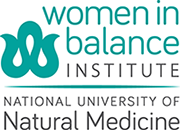 February is all about the heart. In the weeks leading up to Valentine’s Day, grocery stores are filled with sweet heart-shaped cards, candies, and chocolates. Advertisements and commercials urge us to use the holiday as a time to “speak from the heart,” and tell someone how we feel. We might buy red roses at the florist, or a cake in the shape of a heart from our local bakery. However, it is not just stores and television commercials who feature the heart in February. The CDC has designated February “American Heart Month,” bringing awareness to a more serious heart-related issue: Cardiovascular Disease.
February is all about the heart. In the weeks leading up to Valentine’s Day, grocery stores are filled with sweet heart-shaped cards, candies, and chocolates. Advertisements and commercials urge us to use the holiday as a time to “speak from the heart,” and tell someone how we feel. We might buy red roses at the florist, or a cake in the shape of a heart from our local bakery. However, it is not just stores and television commercials who feature the heart in February. The CDC has designated February “American Heart Month,” bringing awareness to a more serious heart-related issue: Cardiovascular Disease.
Cardiovascular disease, which includes heart disease, stroke and high blood pressure, has a massive impact on our country’s well-being- physically, emotionally, and economically. It is the leading cause of death for both women and men in our country, as well as a leading cause of disability. According to the CDC, heart disease costs the United States over $300 billion each year, including the cost of health care services, medications, and lost productivity.
We know that there are several risks factors involved in cardiovascular disease, including having a close relative with the disease, ethnicity (48% of African American women have some form of cardiovascular disease), an unhealthy diet, and physical inactivity. We also know that preventing cardiovascular disease starts with healthier habits, healthier living spaces, and better management of diseases such as diabetes and high blood pressure. However, experts have been divided on what type of diet is best for preventing heart disease. Dietary fats, in particular, have been a hot topic of debate among researchers, scientists, and physicians for years. However, a recent study suggests that we might want to shift our focus to a different food, a food readily available during this month: sugar.
At the beginning of February, the largest study on the effect of sugar consumption on the risk of cardiovascular disease was published in the Journal of the American Medical Association. Researchers looked at national health surveys from 30,000 people between the years of 1988 and 2010 and found that those who consumed at least 25 percent of their daily calories from added sugar were almost three times more likely to die of heart problems than those who consumed the least amount (less than 10 percent). Findings were consistent across age groups, sex, race/ethnicity, physical activity, body mass index, educational attainment, and health eating indexes. This demonstrates a significant relationship between the consumption of added sugar and morbidity from heart disease.
While there are many things that you can do to help keep your heart healthy, including maintaining a healthy weight, exercising, keeping stress levels in check, and avoiding tobacco, this recent study suggests that decreasing the amount of added sugar in your diet may be one of the most important steps towards reducing your risk of cardiovascular disease. Added sugar can be found in many foods, including pasta sauce, protein bars, and “healthy” treats. Eating whole fruits instead of drinking high-sugar fruit juice, drinking sparkling water with lemon or lime instead of soda, and baking your own treats with less sugar are some great ways to reduce the amount of added sugar in your diet. February can be a very sweet month, with many opportunities to show others and yourself some love. Sugar is optional!
Written by Kaitlyn Pote, NCNM Naturopathic Medicine Program. Edited by Dr Elise Schroeder

